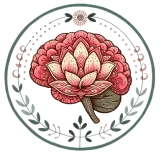Atman (Samskrit: आत्मा) is one of the primary teachings of the Upanishads along with Brahman, Maya, and Karma. The eternal questions about creation, reality, existence, and the mystery of death are solved by the Upanishads. They state that the inmost core of every person is not the body, mind, or ego, but Atman (referred to as Soul or Self). Atman is the adhyatmik essence in all creatures, their real innermost essential being. It is eternal and ageless. Atman is that which is described at the deepest level of one’s existence as per Indian traditions.
The ancient distinction between body and a principle, which is responsible for life and activity, is found commonly all over the world. While modern psychology banished this separate principle, in Indian psychology it has occupied a central place.
परिचयः ॥ Introduction
In addition to the visible gross body, the Upanishads talk about the Atma (Soul), which is distinct from, and independent of, the Indriyas (organs) sensory and motor, from the mind (in its two-fold aspect manas and buddhi) and from the Prana (vital force) with its different functions.
Here when Paramatama (परमात्मा) is addressed as Atman (आत्मन्), a confusion arises with regards to whether the discussion is about a living being or the supreme consciousness?
Brahma sutras, by Vedavyasa, (1-4-19 sutras) explain this as vakyanvayata (वाक्यन्वयत). “The word atma here has to be seen here as Paramatama (परमात्मा).”
आत्मतत्वम् ॥ Nature of Atma
Different upanishads portray different aspects of the Atma that[1]
Atma is unchanged and independent of body (Sharira); only it manifests itself more and more through these bodies.
It is distinct from the sense organs, manas and Prana (vital force)
It has no origin, because it is immaterial and thus beyond space, time and causation under which everything material exists.
It is indestructible, outlives the body and plays a chief role in punarjanma (reincarnation)
It goes after death to different worlds, high and low, and according to its past work and knowledge may return to this world
Its limitations are only for a particular time (until it is under the spell of Avidya as per the Advaita Vedantins)
It is said to have three states having attributes – waking (in which it experiences the outside world), dream (it experiences the inner world of mind) and deep sleep (a blissful state)
It is in reality ominipotent, onmipresent in the fourth state (turiya) when it is described as essentially identical with the Brahman (the unmanifested)
